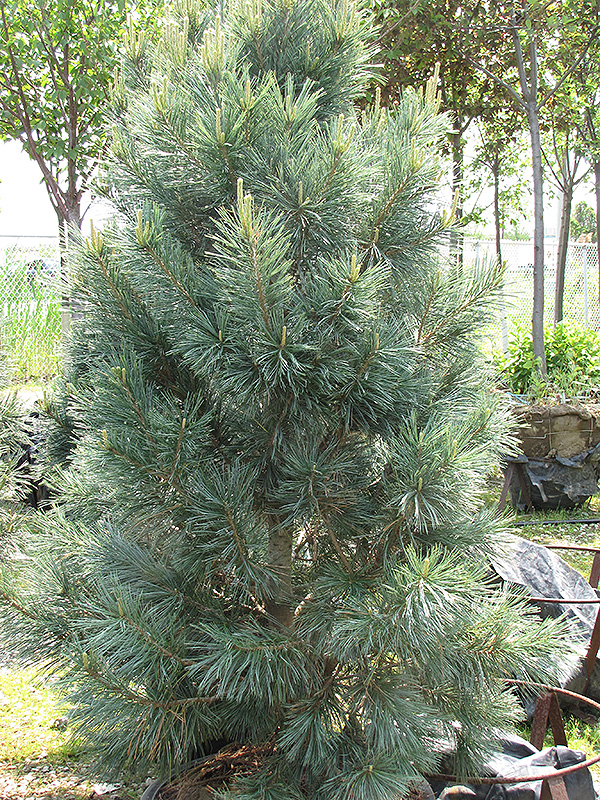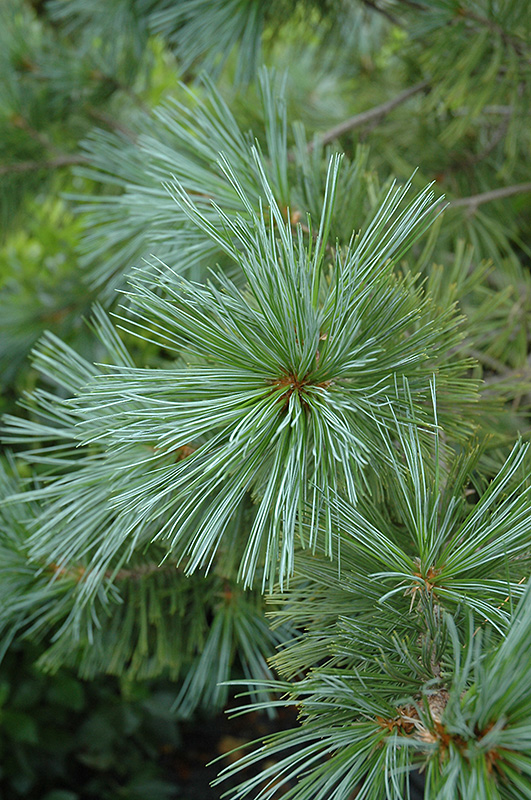Vanderwolf's Pyramid Pine
Pinus flexilis 'Vanderwolf's Pyramid'
Height: 50 feet
Spread: 20 feet
Sunlight:
![]()
![]()
Hardiness Zone: 4a
Description:
A newer popular evergreen tree with a dense, compact pyramidal form; features interestingly twisted blue-green needles on very flexible branches (they can even be tied in a knot!), quite durable, an excellent choice for smaller landscapes
Ornamental Features
Vanderwolf's Pyramid Pine is primarily valued in the landscape for its distinctively pyramidal habit of growth. It has attractive bluish-green evergreen foliage. The needles are highly ornamental and remain bluish-green throughout the winter. The shaggy gray bark adds an interesting dimension to the landscape.
Landscape Attributes
Vanderwolf's Pyramid Pine is a dense evergreen tree with a strong central leader and a distinctive and refined pyramidal form. Its relatively fine texture sets it apart from other landscape plants with less refined foliage.
This is a relatively low maintenance tree. When pruning is necessary, it is recommended to only trim back the new growth of the current season, other than to remove any dieback. It has no significant negative characteristics.
Vanderwolf's Pyramid Pine is recommended for the following landscape applications;
- Accent
Planting & Growing
Vanderwolf's Pyramid Pine will grow to be about 50 feet tall at maturity, with a spread of 20 feet. It has a low canopy with a typical clearance of 5 feet from the ground, and should not be planted underneath power lines. It grows at a slow rate, and under ideal conditions can be expected to live to a ripe old age of 100 years or more; think of this as a heritage tree for future generations!
This tree does best in full sun to partial shade. It prefers dry to average moisture levels with very well-drained soil, and will often die in standing water. It is considered to be drought-tolerant, and thus makes an ideal choice for xeriscaping or the moisture-conserving landscape. It is not particular as to soil type or pH. It is somewhat tolerant of urban pollution. This is a selection of a native North American species.








